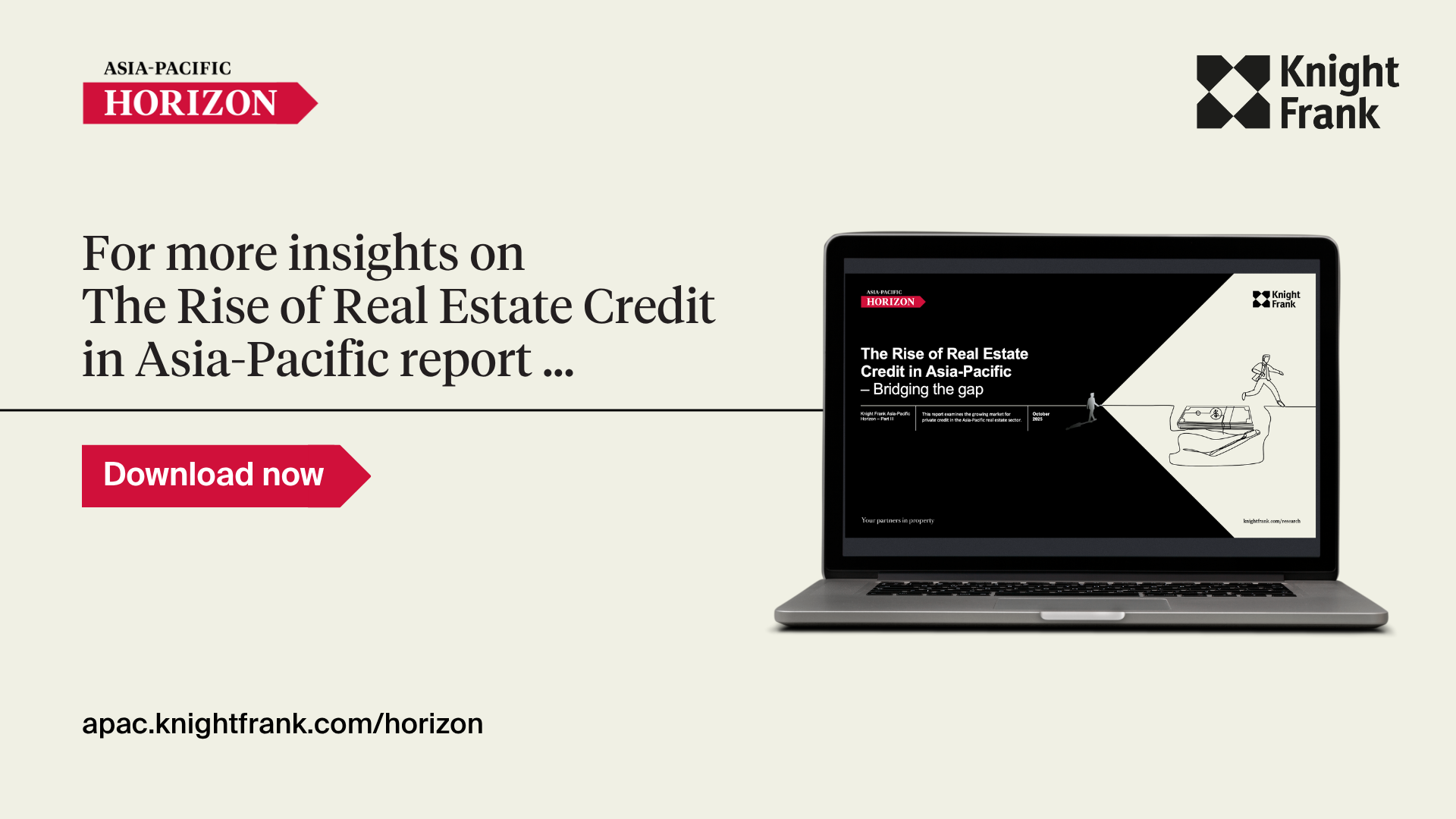Major lenders have halved commercial real estate exposure since 2009, creating a US$33-56 billion opportunity for non-bank lenders.
Australia's private credit market has expanded significantly over the past decade, driven by both global capital shifts and structural changes in the local lending market. The transformation has been particularly pronounced in commercial real estate, where banks have steadily reduced their appetite for property loans under tightening regulatory requirements.
Since 2009, banks have halved their commercial real estate lending from 10% to 5.5% of total assets, while the share of major banks within total CRE lending by deposit-taking institutions has fallen from 87% to 75%.
This movement has enabled alternative lenders to capture meaningful market share. A 2024 report by EY estimated that private credit accounts for US$50 billion of CRE loans, reflecting 16% of total CRE lending. Other estimates range from US$33 billion to US$56 billion.
Regulatory changes open doors for alternative lenders
The shift stems largely from Basel III implementation, which altered the risk weights applying to different forms of lending. These stricter capital requirements have made it more costly for banks to maintain large commercial real estate portfolios, particularly in higher-risk segments like property development and construction finance.
Banks now prioritise lower-risk, standardised lending products that consume less regulatory capital. This has effectively pushed more complex transactions, such as those requiring flexible structures, higher leverage, or faster execution, into the private credit market.
Local lenders expand market presence
Major domestic private credit specialists such as Qualitas, MaxCap, MA Financial, Metrics Credit Partners, and Merricks Capital have emerged over the past decade, partnering with global investors keen to deploy capital into Australian debt strategies. Large domestic investors such as Centuria have also diversified their fund offerings to include debt strategies.
Many private credit providers concentrate their loan exposures in the residential sector, offering loans secured against land with development potential and construction loans to be drawn down sequentially as developments proceed. They also provide residual stock loans secured against completed developments and senior investment loans against traditional commercial asset classes.
Credit funds generally seek returns of 3-6.5% above the RBA cash rate. While returns are attractive, investors must navigate risks presented by planning delays, high levels of insolvency in the construction industry, and policy uncertainty in the residential sector.
Regulators call for more transparency
Regulators have flagged greater scrutiny on the private credit industry, citing the need for greater transparency. This may lead to higher levels of mandatory reporting and data provision as the sector matures and systemic importance grows.
The regulatory attention reflects both the sector's rapid expansion and concerns about maintaining financial stability as more lending activity moves outside the traditional banking system.
Supportive market conditions for growth
Looking ahead, private credit will continue to play an important role in the market. As interest rates fall and asset values stabilise, transaction activity should pick up. This should increase lending activity and lower the risk of borrowers defaulting on loans. As construction costs ease, apartment construction should increase across major cities in both the build-to-sell and build-to-rent sectors. Better funding conditions will strengthen deal flow for lenders.
Returns on senior real estate debt may compress as interest rates fall, but fully funded positions on near-stabilised assets remain attractive on a risk-adjusted basis. Higher-yielding stretched senior and mezzanine strategies are expected to maintain strong investor demand.
Foreign capital flows in
International funds will continue entering the Australian market, supported by transparent legal frameworks and reliable enforcement. Private wealth flows should also rise, mainly through managed accounts and feeder vehicles.
Australia offers transparent legal frameworks, established property rights, and efficient foreclosure processes compared with many Asia-Pacific markets. This reduces execution risk for lenders and enables higher loan-to-value ratios.
Significant growth potential ahead
Australia still has considerable growth potential. In the US, private credit accounts for a much larger share of total CRE lending, indicating Australia's market is not yet fully mature and its share should continue expanding.
As the market matures, lenders will be able to offer larger, more sophisticated loans and achieve better diversification across sectors. Constrained bank lending, attractive risk-adjusted returns, and strong market infrastructure make Australia one of the most accessible private credit markets in Asia-Pacific for both domestic and international investors.
For more insights, please download the latest edition of Knight Frank’s Asia-Pacific Outlook series, The Rise of Real Estate Credit in Asia-Pacific - Bridging the Gap, report below.

For further information, please contact: Ahfisah Rahman, Content and PR Director, Asia-Pacific
Notes to Editors
Knight Frank LLP is the leading independent global property consultancy. Headquartered in London, the Knight Frank network has 740+ offices across more than territories and more than 27,000 people. The Group advises clients ranging from individual owners and buyers to major developers, investors, and corporate tenants. For further information about the Firm, please visit www.knightfrank.com.





